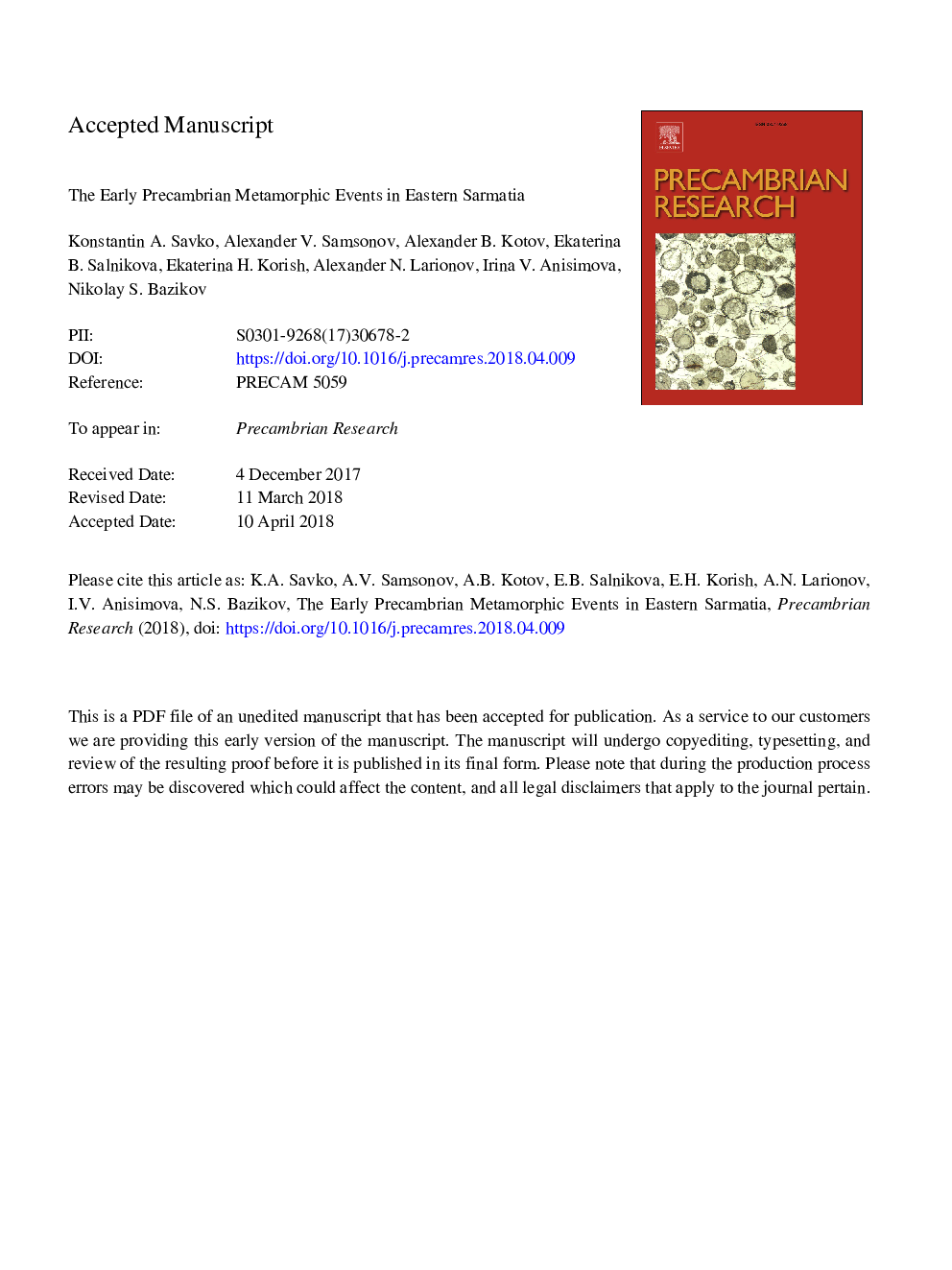| Article ID | Journal | Published Year | Pages | File Type |
|---|---|---|---|---|
| 8912544 | Precambrian Research | 2018 | 32 Pages |
Abstract
Four metamorphic events were identified in the Early Precambrian history of the Eastern Sarmatia. The oldest Mesoarchaean (?) ultrahigh temperature (UHT) metamorphism at 900-1000â¯Â°C and 10-12â¯kbar occurred in the Kursk and Azov domains. Although attempts to constrain accurately the age of metamorphism failed, they provided evidence for the existence of the early Mesoarchaean ultra-hot orogen in the central part of the Archaean core of the Eastern Sarmatia. The 2.82â¯Ga metamorphism, widespread within the Eastern Sarmatia, finished the formation of the ancient Mesoarchaean basement. The granulite facies metamorphism at â¼750â¯Â°C and â¼5â¯kbar is confined to zones composed of gneisses and migmatites, while the epidote-amphibolite and amphibolite facies metamorphism occurred within preserved fragments of greenstone belts. The Palaeoproterozoic low-pressure metamorphism occured at 2.07â¯Ga in all Palaeoproterozoic structures under P-T conditions ranging from 350â¯Â°C at 2â¯kbar to 750â¯Â°C at 5â¯kbar. The metamorphic event was caused by a collision between the Volga-Uralia segment and Sarmatia at ca. 2.1â¯Ga. The youngest high-T granulite metamorphism at 850â¯Â°C and 5.5â¯kbar (2.04â¯Ga) recorded in the Bryansk domain likely reflects a thermal effect related to magmatic event that preceeded the main episode of the Osnitsk-Mikashevichi volcano-plutonic belt formation at the active margin of Sarmatia at 1.96-2.00â¯Ga.
Related Topics
Physical Sciences and Engineering
Earth and Planetary Sciences
Geochemistry and Petrology
Authors
Konstantin A. Savko, Alexander V. Samsonov, Alexander B. Kotov, Ekaterina B. Salnikova, Ekaterina H. Korish, Alexander N. Larionov, Irina V. Anisimova, Nikolay S. Bazikov,
